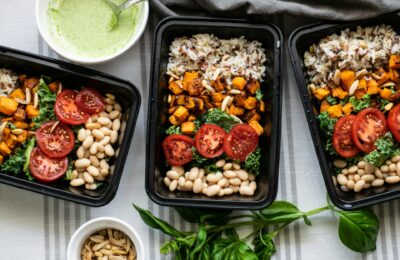The first meal of your day sets the tone for everything that follows. While many people reach for sugary cereals or skip breakfast entirely, there’s a better approach that takes just minutes to prepare and delivers lasting energy. Smoothie recipes have become the go-to solution for busy individuals who refuse to compromise on nutrition.
These blended beverages offer something traditional breakfasts often lack: a perfect balance of vitamins, minerals, protein, and fiber in one convenient package. Unlike processed breakfast ideas that leave you hungry within hours, well-crafted smoothies provide sustained energy that carries you through your morning activities.
The beauty of morning smoothies lies in their versatility. You can customize each blend to meet your specific nutritional needs, dietary restrictions, and taste preferences. Whether you’re looking to boost your protein intake, increase your vegetable consumption, or simply enjoy something delicious, there’s a combination that works for you.
Nutrient-packed smoothies also solve the common problem of not getting enough fruits and vegetables in your diet. A single glass can contain multiple servings of produce, making it easier to meet your daily nutritional goals before you even leave the house.
Essential Components for Morning Nutrition
Base Liquids That Make a Difference
The foundation of any great smoothie starts with choosing the right liquid base. Each option brings unique nutritional benefits that can enhance your morning routine.
Unsweetened almond milk provides a creamy texture while keeping calories low. It’s naturally rich in vitamin E and often fortified with calcium and vitamin D. For those seeking higher protein content, Greek yogurt thinned with water creates an excellent base that supports muscle maintenance and promotes satiety.
Coconut water offers natural electrolytes, making it perfect for post-workout recovery or hot summer mornings. Meanwhile, green tea (cooled) adds antioxidants and a gentle caffeine boost without the jitters associated with coffee.
Protein Sources for Sustained Energy
Including adequate protein in your morning smoothie recipes helps stabilize blood sugar levels and prevents mid-morning energy crashes. Plant-based protein powders work well for those following vegan diets, while whey protein offers complete amino acid profiles for muscle support.
Natural protein sources like hemp hearts, chia seeds, and nut butters provide additional benefits beyond protein content. Hemp hearts contain omega-3 fatty acids, chia seeds offer fiber and calcium, and almond butter contributes healthy fats that enhance nutrient absorption.
Greek yogurt serves double duty as both a protein source and a creamy base. Choose plain varieties to avoid added sugars, then sweeten naturally with fruits or a small amount of honey.
Fiber and Healthy Fats
Fiber plays a crucial role in digestive health and helps you feel satisfied longer. Ground flaxseed, rolled oats, and avocado are excellent additions that boost fiber content without overwhelming the flavor profile.
Healthy fats from sources like avocado, coconut oil, and nuts help your body absorb fat-soluble vitamins (A, D, E, and K) from other ingredients. They also contribute to the creamy texture that makes smoothies so satisfying.
Power-Packed Morning Blends
Green Goddess Energizer
This nutrient-packed blend combines leafy greens with tropical fruits for a refreshing start to your day. Spinach provides iron and folate, while pineapple adds natural sweetness and vitamin C.
Combine two cups of fresh spinach, one cup frozen pineapple chunks, half a frozen banana, one tablespoon almond butter, and one cup coconut water. The result is a vibrant green smoothie that tastes tropical rather than vegetable-forward.
Add a scoop of vanilla protein powder to boost the protein content, or include a tablespoon of chia seeds for extra fiber and omega-3 fatty acids.
Berry Antioxidant Powerhouse
Mixed berries offer one of the highest concentrations of antioxidants available in whole foods. This combination supports brain health and may help reduce inflammation throughout the body.
Blend one cup mixed frozen berries, half a cup Greek yogurt, one tablespoon ground flaxseed, one teaspoon honey, and three-quarters cup unsweetened almond milk. The frozen berries create a thick, almost ice cream-like texture that feels indulgent.
For additional protein, add a scoop of unflavored or vanilla protein powder. A handful of baby spinach can be included without significantly affecting the taste while boosting the nutritional value.
Chocolate Peanut Butter Dream
Satisfy your sweet tooth while fueling your body with this decadent yet nutritious option. The combination mimics the flavor of a chocolate peanut butter cup but provides sustained energy instead of a sugar crash.
Use one frozen banana, two tablespoons of natural peanut butter, one tablespoon unsweetened cocoa powder, one cup unsweetened almond milk, and a handful of ice cubes. The banana provides natural sweetness and potassium, while cocoa powder adds antioxidants.
Consider adding a scoop of chocolate protein powder for extra protein, or include a tablespoon of ground flaxseed for omega-3 fatty acids and additional fiber.
Advanced Nutritional Strategies
Superfood Additions
Certain ingredients pack extraordinary nutritional density into small serving sizes. These superfoods can elevate your breakfast ideas from good to exceptional.
Spirulina powder provides complete protein and B vitamins in just one teaspoon. Start with small amounts, as the flavor can be intense. Maca powder offers adaptogenic properties that may help your body manage stress while providing a subtle caramel flavor.
Cacao nibs deliver antioxidants and a pleasant chocolate crunch without added sugar. Goji berries contribute vitamin A and a slightly sweet, tangy flavor that pairs well with tropical fruits.
Balancing Macronutrients
The most effective smoothie recipes contain a balanced ratio of carbohydrates, protein, and healthy fats. This combination promotes stable blood sugar levels and sustained energy throughout the morning.
Aim for approximately 40% of calories from carbohydrates (primarily from fruits and vegetables), 30% from protein, and 30% from healthy fats. This ratio supports both immediate energy needs and long-term satiety.
Adjust portions based on your individual needs and activity levels. Those engaging in intense morning workouts may benefit from higher carbohydrate content, while individuals focused on weight management might prefer higher protein ratios.
Timing and Preparation
Nutrient-packed smoothies are most effective when consumed within 30 minutes of blending to maximize nutrient availability. However, busy schedules don’t always allow for fresh preparation each morning. Prepare smoothie packs by portioning frozen fruits, vegetables, and dry ingredients into freezer bags.
In the morning, simply dump the contents into your blender, add liquid and any fresh ingredients, and blend. Some ingredients, like bananas and avocados, can be pre-sliced and frozen to maintain texture and nutritional value. Store leafy greens properly to extend their freshness, or consider using frozen spinach for convenience.
Common Mistakes and Solutions
Many people inadvertently sabotage their healthy intentions when creating morning smoothies. Understanding these pitfalls helps you make better choices that align with your health goals.
Using too much fruit can lead to excessive sugar content, even from natural sources. Balance sweet fruits with vegetables, protein, and healthy fats to moderate the glycemic impact. Forgetting about portion sizes can turn a healthy breakfast into a calorie bomb.
Most people need between 300 and 500 calories for breakfast, depending on their overall daily needs and activity levels. Relying solely on fruit for nutrients misses opportunities to include vegetables, which provide different vitamin and mineral profiles. Even small amounts of spinach, carrots, or beets can significantly boost the nutritional value.
Making It Work for Your Lifestyle
The best breakfast ideas are those you’ll follow consistently. Creating systems and routines around smoothie preparation increases your likelihood of success.
Invest in a high-quality blender that can handle frozen ingredients and leafy greens effectively. Poor blending results in unpleasant textures that discourage regular consumption. Keep frozen fruits and vegetables on hand to ensure you always have ingredients available.
Frozen produce often contains higher nutrient levels than fresh items that have been stored for extended periods. Experiment with different combinations to prevent boredom. What starts as an exciting new routine can quickly become monotonous if you don’t vary your ingredients and flavors.
Fuel Your Success One Sip at a Time
Creating nutrient-packed morning smoothies doesn’t require complex recipes or expensive ingredients. The key lies in understanding basic nutritional principles and finding combinations that appeal to your taste preferences while meeting your health goals.
Start with one or two recipes that sound appealing, then gradually experiment with different ingredients as you become more comfortable with the process. Pay attention to how different combinations affect your energy levels and hunger throughout the morning.
Remember that consistency matters more than perfection. A simple smoothie consumed regularly provides more benefits than an elaborate recipe you only make occasionally. Focus on establishing the habit first, then refine your approach as it becomes part of your routine.
Your morning routine sets the foundation for the entire day. By choosing smoothie recipes that prioritize nutrition without sacrificing taste, you’re investing in sustained energy, better health, and a more productive day ahead.






